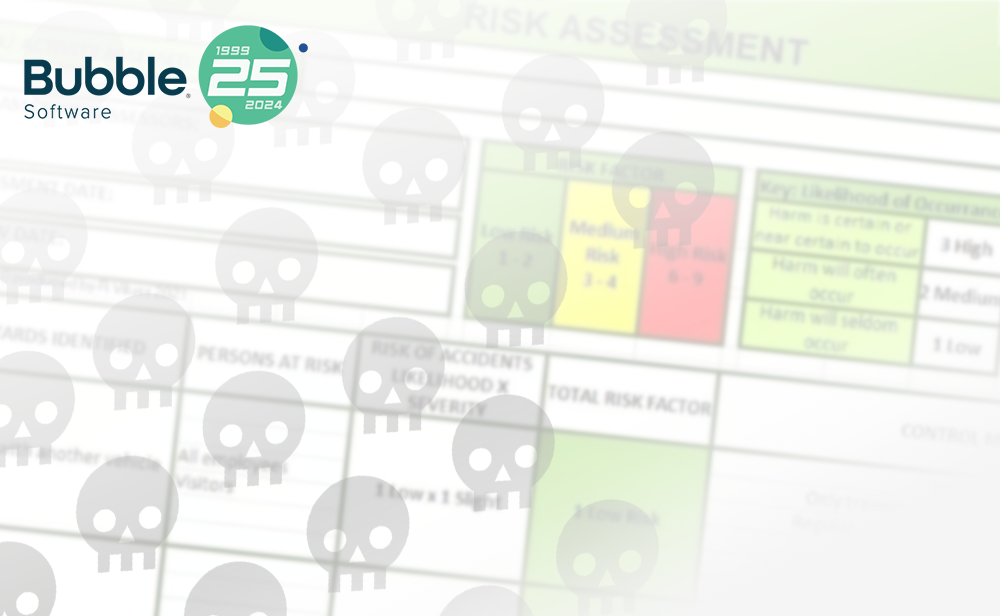Saving risk management from the slow death of spreadsheets
Do your projects run late? Mine certainly used to. Project lateness has become so ingrained in our expectations that in a recent survey of project managers developing medical devices, when asked to think about successful projects that they had completed, none of them considered lateness to be a ‘failure’. In fact, in almost every industry, late delivery is endemic, and this makes business planning extremely difficult!
Why the focus on project lateness?
What about the other two pillars of project success: budget and scope? In practice almost everything can be measured in time. Budget overruns are usually the direct result of delays. Scope creep can also be measured in delays. In fact, in some industries, the risk register evaluates every risk in terms of days delay.
A key driver of lateness: Uncertainty in Planning
Clearly, for any individual project, there could be any number of reasons for delivering late, but fundamentally the root cause is the level of uncertainty in the plan when it is first created. That’s why repeated projects, which follow a strong, pre-defined process, are much more likely to come in on time. But how can we reduce the impact of the uncertainty in planning?
Risk management is really a tool for managing and reducing uncertainty in the plan. By anticipating all potential paths that the project could take, and taking steps to reduce the likelihood and impact of the undesirable paths, the uncertainty is greatly reduced. Ultimately, this means greater confidence in on-time delivery.
2 steps to creating a Risk Management plan
Overcoming the above challenges requires a trust and transparency. Trust being represented by the desire to identify and own challenges and transparency in reporting said risks without fear of reprisal. Here’s what works:
1. Enable the Project Team to Take Control
The goal is for the project team to feel that they can take control of the delivery leadtime – that it is an input to the project, not an uncontrollable outcome. This sense of control comes from proactive risk management.
2. Build and Draw on Collective Experience
Good risk management also enables a project team to benefit from their collective experience, even if a similar project has never been done before. Working through standard risk categories such as technical uncertainties, scope creep, resources, funding, and more – by brainstorming the potential things that could go wrong and mitigating their likelihood and impact in advance, the chances of on-time delivery will be dramatically improved.
Despite the fact that risk management is so crucial to delivering projects that are on time, within scope and budget, in my previous role as a Project Manager, I was a disaster at noting down risks. We were a small team, with too many projects, too little time, and it felt like we were constantly fighting fires. When big risks came up, I’d throw them into the agenda for a gate review meeting, scribble something in my One Note or (even worse) on a Post-It curling on the corner of my desk. Risks were dealt with, issues were addressed, projects were successful, but documenting each one offered very little reward for the effort required.
My approach to risk management transformed when I started working at Bubble. Visual dashboards of project risks that I can understand in a glance motivated me to use the Risk Register every time, no matter how small my risk seemed in the moment. Filling in the Risk Register became useful for me because the dashboard offered an instant overview of the project status for myself and the rest of the team.
Conclusion
Seeing how project risks could be rolled up to review at a portfolio level was also a revelation. Individual risks, which update in real time, form part of a bigger story that can be analyzed and translated into lessons learned. Individual risks become crucial data points that allow us to evolve and improve our processes.
When every risk is part of the pattern that helps our team improve, I want to contribute to that story. I’m more engaged because I see the purpose of my work within the ecosystem that I operate within.
Risks, so carefully logged by your over-stretched project teams deserve more than a slow death in a spreadsheet document. Stop hiding them behind a hundred clicks, in a folder that no one can find. Consider using a PPM platform that brings risks out of the shadows and properly leverages them to drive more successful projects.


Ready to learn more? Contact our commercial team today to discuss how Bubble PPM can address the unique needs of your organization by transforming your risk management process. Alternatively click on one of the links below which take you direct to our Bubble PPM software platform.
E: hello@bubblegroup.com T: +44 (0)1223 852664
About Bubble
Bubble® is a leading software company specialized in the development of Enterprise Project Management and Project Portfolio Management (PPM) solutions. Our cloud-based PPM software, Bubble PPM™, helps organizations in Innovation, R&D, New Product Development, and other disciplines, to select the right projects, execute them reliably, and improve productivity.
Founded in 1999, the company is Headquartered in the UK, serving customers across the globe via our offices in Cambridge, London, and Melbourne.






